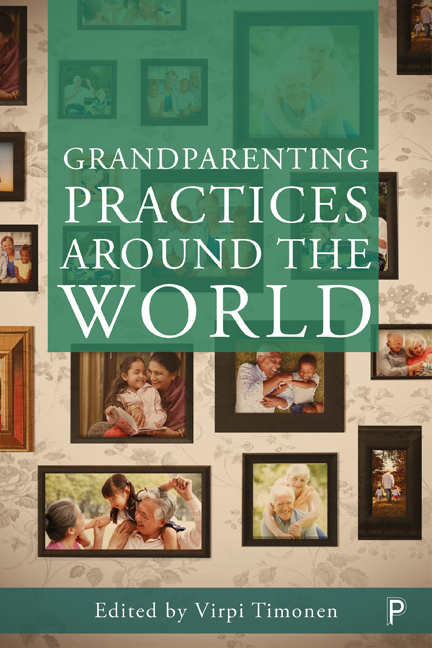Book contents
- Frontmatter
- Contents
- List of figures and tables
- List of abbreviations
- Notes on contributors
- one Introduction: widening the lens on grandparenting
- PART 1 The demographic and welfare-state contexts of grandparenting
- PART 2 Grandparenting in contexts of economic and societal development
- PART 3 Transnational grandparenting
- PART 4 Gender, intersectionalities and grandparenting
- PART 5 Grandparental roles, agency and influence
- Index
ten - Grandfamilies in the United States: an intersectional analysis
Published online by Cambridge University Press: 22 April 2022
- Frontmatter
- Contents
- List of figures and tables
- List of abbreviations
- Notes on contributors
- one Introduction: widening the lens on grandparenting
- PART 1 The demographic and welfare-state contexts of grandparenting
- PART 2 Grandparenting in contexts of economic and societal development
- PART 3 Transnational grandparenting
- PART 4 Gender, intersectionalities and grandparenting
- PART 5 Grandparental roles, agency and influence
- Index
Summary
Historically, grandparents have served as important sources of instrumental and emotional support to their children and grandchildren (Uhlenberg and Cheuk, 2010). The nature and extent of the support provided by grandparents to younger generations varies widely across global contexts and is influenced by sociopolitical forces, including economic opportunities, immigration, urban migration, disease epidemics and armed conflicts, as well as cultural traditions of grandparent involvement (Dolbin-MacNab and Yancura, 2018). Specific family circumstances such as intergenerational solidarity and family crises are also relevant to understanding grandparents’ involvement in their families (Dolbin-MacNab and Yancura, 2018). Serving as a surrogate parent to one's grandchildren reflects one of the most intensive degrees of grandparent involvement in family life. In this chapter, these grandparents will be referred to as grandparents raising grandchildren, and their families as grandfamilies.
In the United States, approximately 2.6 million grandparents are raising 2.5 million or 3% of all children (Annie E. Casey Foundation Kids Count Data Center, 2016; Ellis and Simmons, 2014). Approximately one third of these grandparents are living in skipped generation households, meaning they are raising their grandchildren in a home without the grandchild's parents (Ellis and Simmons, 2014). While the remaining grandparents may co-reside with one or both of the grandchildren's parents, typically the grandchild's mother, these grandparents are often functioning as parental figures and supporting their grandchildren financially (Baker and Mutchler, 2010). Raising grandchildren is often a long-term caregiving arrangement: 39% of grandparents have raised their grandchildren for at least five years (Ellis and Simmons, 2014). Finally, United States grandparents raise their grandchildren both formally and informally; grandparents raising grandchildren formally do so within the context of the child welfare system or have established a legal relationship, such as custody, guardianship or adoption, with their grandchildren (Generations United, 2016). The vast majority of grandparents in the United States, however, are raising their grandchildren informally; there are 26 children in informal caregiving arrangements for every one child living in a formal arrangement (Generations United, 2015). These informal caregiving arrangements create barriers to grandparents’ ability to access support services through the government, enrol their grandchildren in school and/or obtain medical care (Generations United, 2015).
- Type
- Chapter
- Information
- Grandparenting Practices around the World , pp. 189 - 208Publisher: Bristol University PressPrint publication year: 2018

